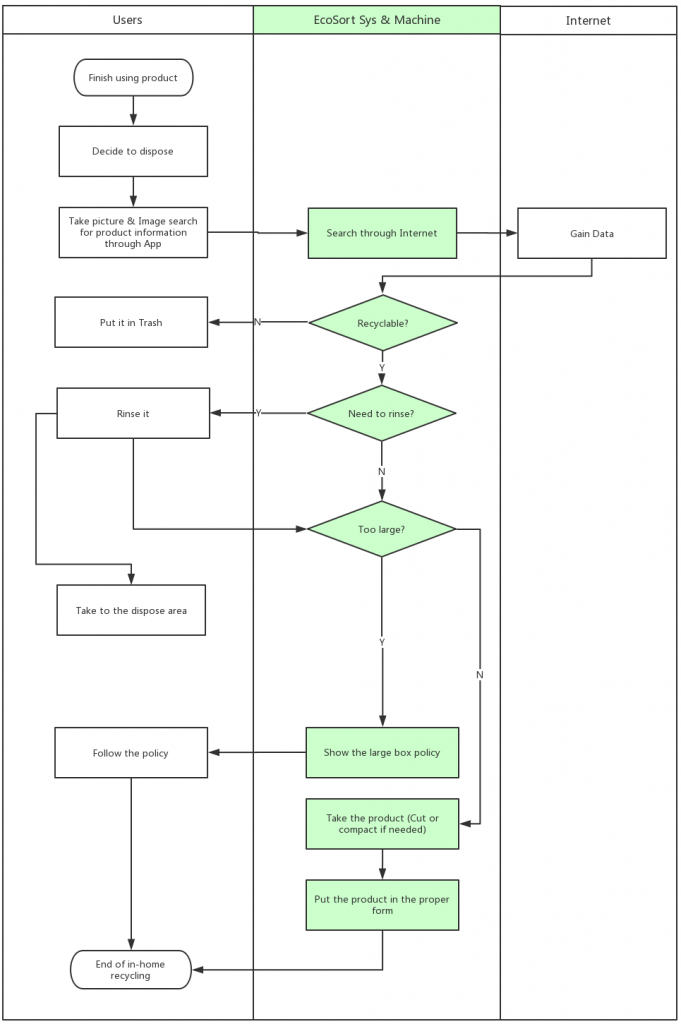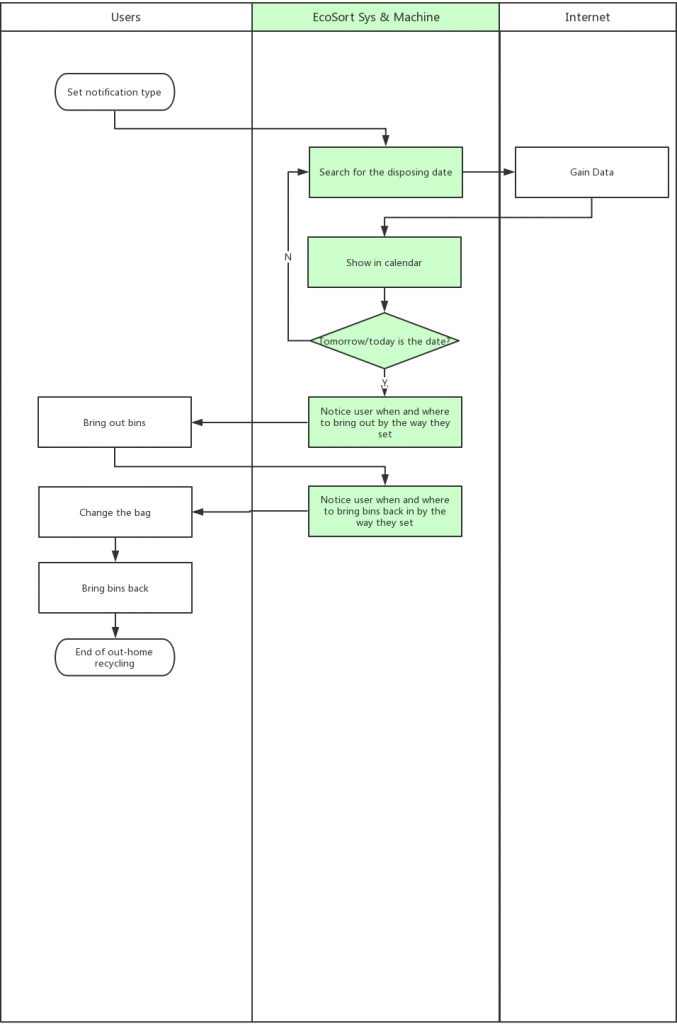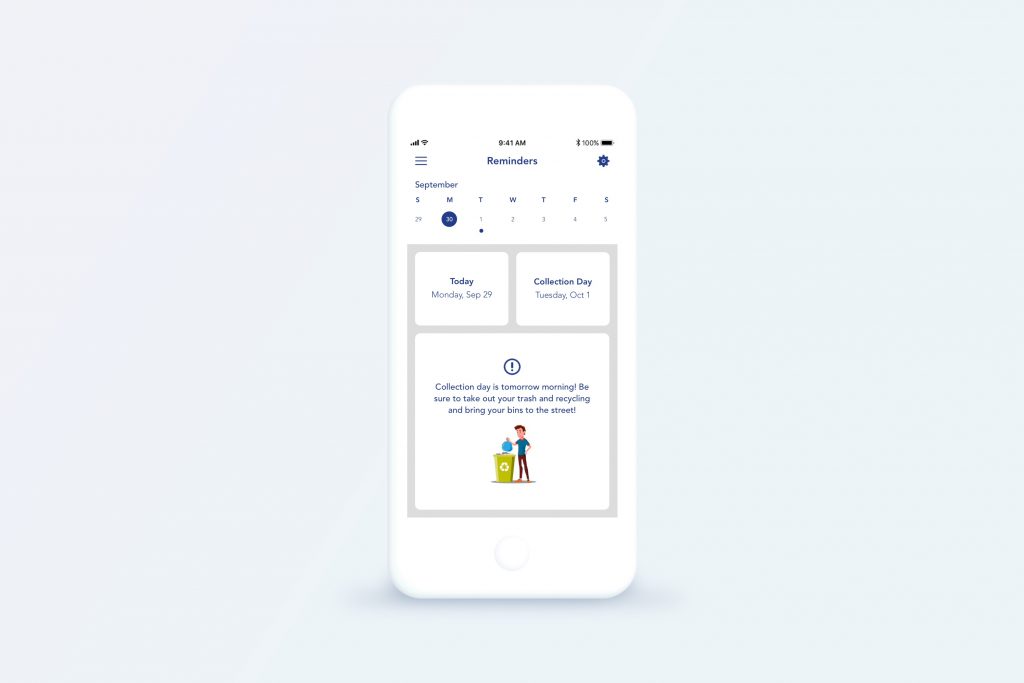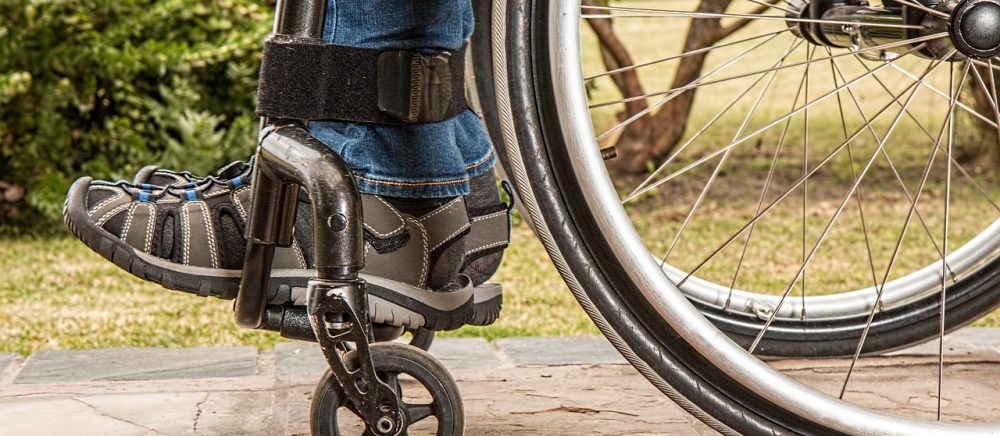Team Members: Audrey Balaska, Zack Nassar, Wenyi Wu
What is the EcoSort Recycling System?
The EcoSort Recycling System is a smart home-based recycling system, which can help people with garbage and recycling disposal. It also have a mobile application that can easily operate to scan the disposing product, show information and notify people about the date and time to bring garbage bins out and back in once the rule was set.
Why we want to make a home-based recycling system?
- Recycling is important — It can reduce costs and pollutant emissions and save energy for garbage disposal, and finally help global climate.
- People have trouble when dealing with recycling – A lot of questions come up: Is the product recyclable? Does it need rinsing before being put in the bin? What should I do when the product is too big to fit in the bin? What is the date I should bring bins out?
- All smart recycling systems/machines that exist now are not “smart” enough – There are some bins that can tell people if they put products in the proper bin or not by flashing red or green when people start disposing it, but every time they use it, people still need to repeat the disposing action several times. Moreover, it doesn’t solve the problem of rinsing, unfit size and disposing date.
https://www.smithsonianmag.com/innovation/smart-recycling-bin-could-sort-your-waste-you-180964848/
Task Analysis
Initially, we explored what steps immediately came to mind when walking through the process of recycling something in the home. This assumed the entire process was done by a human.
After completing this task analysis, we went through multiple iterations of our task analysis. We identified constraints and problems with the system. We modified our task analysis to include steps completed by the machine (that are not necessarily part of the process when having a human user).
Our team identified some problems, or “Pain Points” for the current setup with only a human user. These included:
- Lack of education about proper recycling
- Changes in recycling schedule due to holidays
- Not knowing proper form for recycling
- Not rinsing products sufficiently
- Not knowing which products are actually recyclable
- Forgetting to take out trash/recycling at appropriate time
- Even with adequate knowledge, mis-sorting due to human error
- Time it takes to figure out how to recycle something
We updated our task analysis so that it no longer implied and/or assumed that certain knowledge was known (for example, we initially assumed that the user would know which products should be rinsed. We updated our task analysis to make acquiring this knowledge its own step). We also made our steps more specific, and re-ordered the steps in the sorting process slightly. This is because steps that occur almost simultaneously for a human user need to occur in a specific order once a machine has been added to the system. We also realized that there were two distinct sections of our task analysis: The first part is the sorting of individual products within the home and putting them in the indoor storage container. The second part is bringing out the recycling to the larger, outdoor bin and bringing that bin to and from the curb at the appropriate times. Separating these into two separate processes makes it easier to understand how the steps relate to each other.
We also identified some system constraints. These are:
- Size of myRecycler container (if not monitored, can result in overflow)
- Products need to be rinsed adequately
- Products need to be able to be put into proper form using only mechanisms in the myRecycler (needs to be a robust system).
- Limits to what can and cannot be recycled depending on recycling company processes and policies.
Task Classification
For each step in the task analysis, our team determined if each step primarily involves one of the following:

Data steps involved only gathering information. They did not require any decisions or interpretations of the data, and no actions were taken based on the information collected.
Analysis steps involved taking the data and figuring out what the best course of action was based on the task.
Decision steps were ones where someone had to pick between options (in these steps, there is not a “best answer”).
Action tasks in this setup are typically physical behaviors of the system. They are based on the decisions or analyses, but do not involve any “thought” themselves.
It was also determined whether each step would be completed by the operator, the machine or both.
Automation Table
For each task in this recycling process, it was necessary to determine whether the task was completed by the human, the user, or by both. This information can be seen in the table located in the link below. Our main consideration when deciding whether or not to automate a step was if a human struggled with the task. Largely, this meant data acquisition and analysis was left to the machine, since a “point of pain” for the user was trying to figure out what actually is recyclable and how to recycle it.
Flowchart
Looking deep into the task analysis, we found that there were actually two parts of the whole process: The in-home recycling including rinsing and disposing product into bins, which focus on “what should be done to the product”, and the out-home recycling including bring bins and changing bags, which focus on “the date to bring bins”. So, we split it into two flowcharts, both have users, machine/system and internet parts, to make the time flow and logical chain more clearly.
The in-home recycling flowchart

The out-home recycling flowchart

User Experience & User Interface
Follow the link below to get an explore the mobile and machine UX/UI for the EcoSort system!


Naive User Walkthrough
Follow the link below to learn about Jane’s experience using the EcoSort system for the first time!

